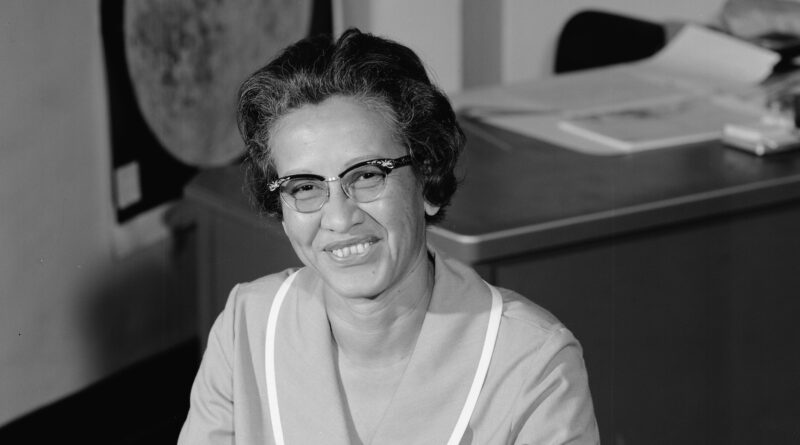NASA’s ‘Hidden Figures’ Honored with Congressional Gold Medal for Groundbreaking Work
A group of Black women mathematicians, aeronautical engineers and human computers whose groundbreaking work for NASA during the 20th century space race contributed to the nation’s historic achievements were awarded the Congressional Gold Medal in a ceremony Wednesday on Capitol Hill.
The recipients received the country’s highest civilian honor and include three women who became known as NASA’s “Hidden Figures” — Mary Jackson, NASA’s first black female engineer, and mathematicians Katherine Johnson and Dorothy Vaughan, whose work helped pave the way for the first American astronaut to successfully orbit the Earth.
All three women were honored posthumously on Wednesday, with their families present at the ceremony to receive the awards on their behalf.
House Speaker Mike Johnson, who delivered the opening remarks at the ceremony, described the women as “giants on whose shoulders all of these astronauts stood at a time … when our nation was divided by color and often by gender.”

This photo provided by NASA shows mathematician Katherine Johnson in 1966.
NASA via AP
“These women dared to venture into fields where they had previously been unwelcome. They excelled in science and mathematics and made revolutionary contributions to aeronautics. But these women did more than just crunch numbers and solve equations for the space program,” Johnson said. “They laid the very foundation upon which our rockets launched, our astronauts flew, and our nation soared.”
“Although we call them ‘hidden figures,’ we should not view them as merely secondary characters in the American story of space exploration,” he continued. “It was the engineers and mathematicians who wrote the story itself.”
The Congressional Gold Medal was also awarded Wednesday to aeronautical engineer Christine Darden, who is “internationally known for her research on supersonic aircraft noise, particularly sonic boom reduction,” according to NASAand became the first black woman at NASA Langley to be appointed to the senior executive rank of the Senior Executive Service.

This photo provided by NASA shows engineer Mary W. Jackson at the Langley Research Center in Hampton, Virginia, in 1977.
Robert Nye/NASA via AP
The legacy and story of Jackson, Johnson and Vaughan was immortalized in the 2016 film Hidden Figures, loosely based on the 2016 nonfiction book of the same name by Margot Lee Shetterly. In the film, Jackson was played by Janelle Monáe, Johnson by Taraji P. Henson and Vaughan by Octavia Spencer.
NASA Administrator Bill Nelson also spoke at Wednesday’s ceremony, honoring the women.

This undated photo provided by NASA shows Dorothy J. Vaughan.
NASA via AP
“The pioneers we honor today, these ‘hidden figures,’ their courage and their imagination took us to the Moon, and their lessons, their legacy will take us back to the Moon, and then imagine, imagine, when we leave our footprints on the red sands of Mars,” he said. “Because of these people who are part of our NASA family, we will continue to sail the cosmic sea to distant shores.”
The Congressional Gold Medal was also awarded Wednesday to all women who served as human computers, mathematicians and engineers between the 1930s and 1970s at NASA and the National Advisory Committee for Aeronautics, NASA’s predecessor.

House Speaker Mike Johnson presents a Congressional Gold Medal to Apollo Sample Handler Andrea Mosie during a Congressional Gold Medal ceremony honoring women who served as computer scientists, mathematicians, and engineers at NASA between the 1930s and 1970s, on Capitol Hill in Washington, DC, September 18, 2024.
Piroschka Van De Wouw/Reuters
According to NASAThe space race between the United States and the then Soviet Union began in 1957 with the USSR’s successful launch of the world’s first artificial satellite, Sputnik I.
President John F. Kennedy challenged the United States in a speech to Congress on May 25, 1961, to land an American on the moon before the end of the decade. That goal was achieved eight years later when astronauts Neil Armstrong and Edwin “Buzz” Aldrin became the first two humans to set foot on the moon, while fellow astronaut Mike Collins flew the Apollo 11 command module around the moon, according to the site. NASA.
Wednesday’s ceremony came nearly five years after the adoption of the HR 1396 — the Hidden Figures Congressional Gold Medal Act — in 2019. The legislation directed Congress to award the Congressional Gold Medal to Johnson, Jackson, Vaughan, Darden and “all women who served as computer scientists, mathematicians, and engineers” at NASA and NACA “between the 1930s and 1970s.”
The late Representative Eddie Bernice Johnson, who first introduced the Hidden Figures Congressional Gold Medal Act in February 2019, thanked her colleagues on October 17, 2019, after the bill passed, saying in a statement At the time, “honoring the many women who have not received the recognition they deserve for their contributions to technological progress and competitiveness in the United States has become one of my greatest privileges as a member of Congress.”
The congresswoman, a Texas Democrat who chaired the House Science Committee from 2019 to 2022, died on December 23, 2023.
ABC News’ Sabina Ghebremedhin contributed to this report.

